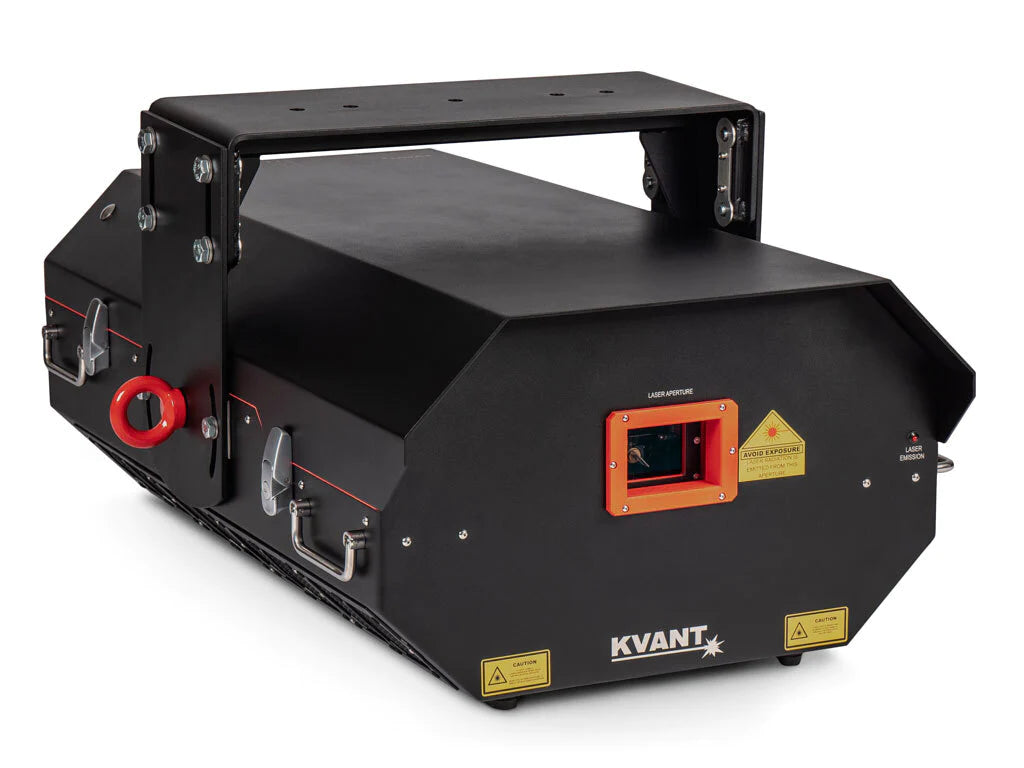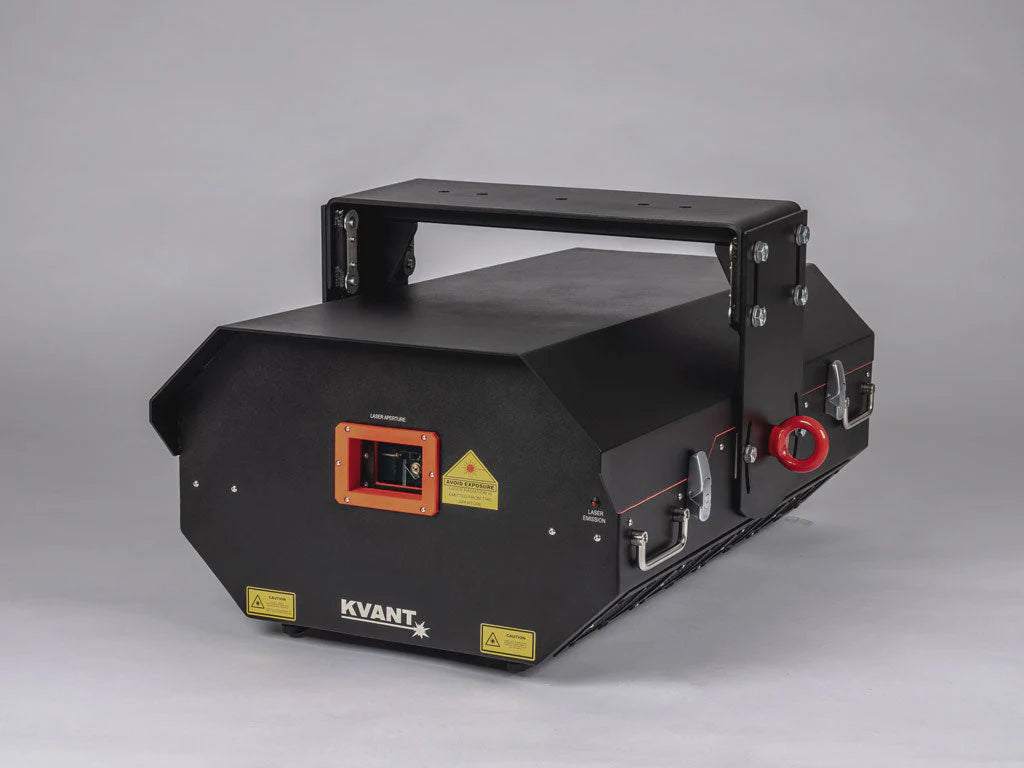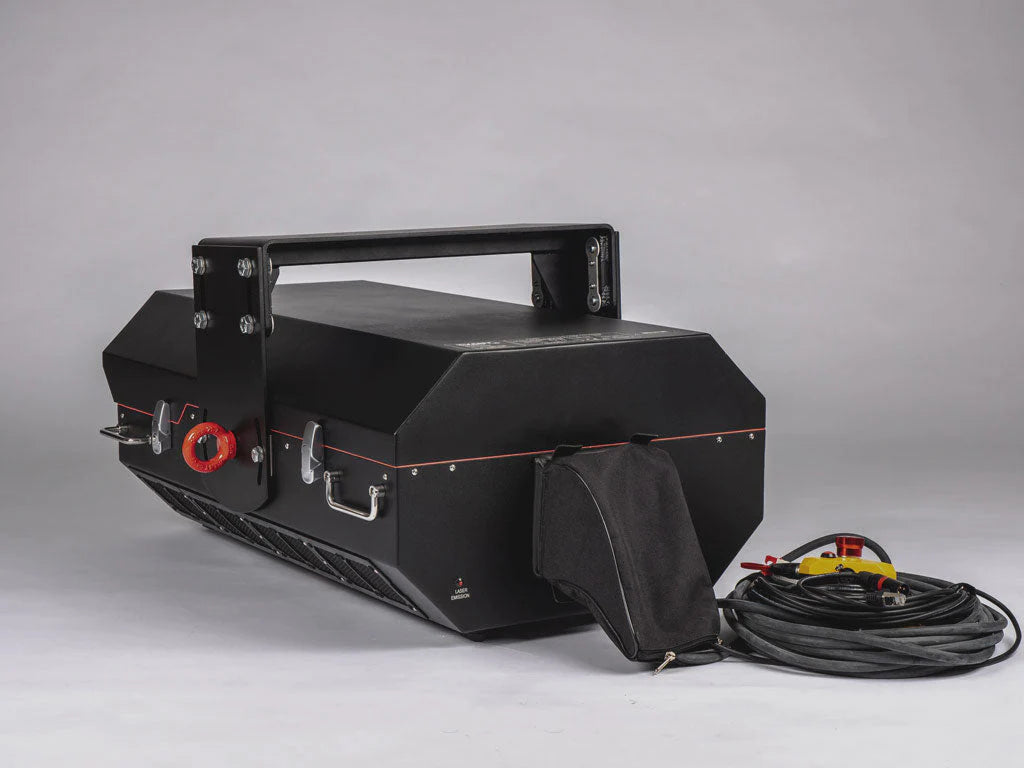KVANT Lasers
KVANT Epic 270 BlueBoost
KVANT Epic 270 BlueBoost
Price on application
Request QuotationOverview:
For all those impressive displays and unforgettable memories - KVANT presents the Epic 270!
KVANT Epic systems are the newest entry in our laser projector lineup, delivering a supercharged power output. Each of the three projectors offer full-color output of 100, 170, and 270 Watts, respectively, and have scanners for creating spectacular atmospheric, abstract, and basic graphic effects. It is ruggedly designed for external environments and functions at IP65 standards, providing full protection against water and dust.
This 270-Watt Epic is the same as the 170-Watt version but with a doubled-power blue laser for more punchy blue effects.
And due to the fact that RBG module internal colour variance can be difficult to resolve when lasers are difficult to access, we fitted Epic models with standard Motorised Dichroic Filters to simplify the process.
Specifications:
| Source | Type: |
|
| Suitability: | Outdoor laser displays [atmospheric, abstract, simple graphics] |
| System control: | FB4-SK [Ethernet, ArtNet, DMX, ILDA | PC, Lighting Console or Autoplay]
|
| Compliant with: |
|
| Ingress Protection rating: |
|
| Weight [kg]: | 89 |
| Size [WxHxD, mm]: | 500 x 315 x 876 [Technical Drawings are in the SUPPORT section of this page]
|
| Guaranteed opt. output: | 270 Watts |
| Red | Green | Blue [W]: |
|
| Wavelengths [nm, ±5nm]: | 638 | 525 | 465+455
|
| Beam size [mm]: | 10 x 12 |
| Beam divergence [mrad]: |
|
| Modulation [kHz] | type: | 100 | analogue |
| X-Y scanners: | Juno 5 | 20 Kpps @ 8°, max. scanning angle 40° on both axes |
| Power requirements [V] | Input: |
|
| Max. power consumption [VA]: | 1800 |
| Operation temperature [°C]: | 10-35 |
| Included in the set: |
Pangolin QuickShow laser control and creation software is available for FREE download. |
| HW features: |
Scanning system overload protection. Colour Balance display mode. Motorised Dichroic Filters for an easy colour alignment. |
| Laser safety features: |
|
| *note |
|
| **note | The beam divergence total is calculated as an average arithmetic value of all individual colours. The divergence of each colour is calculated as: 1. FWHM of the beam cross-section for round beams, or 2. The arithmetic average of the beam's horizontal and vertical divergence for all rectangular beams. |
Share





